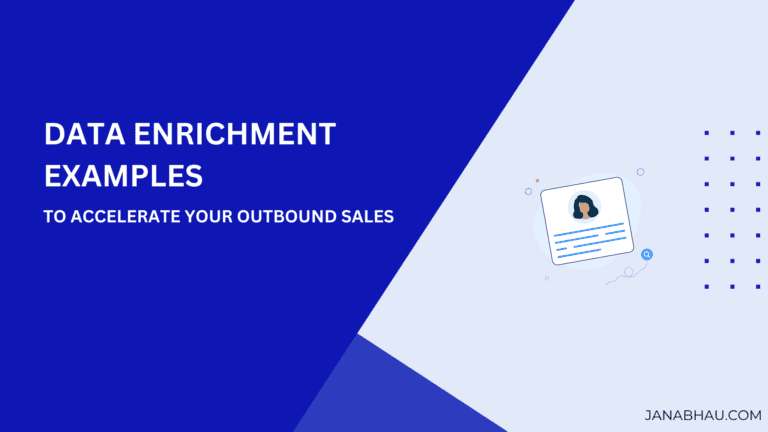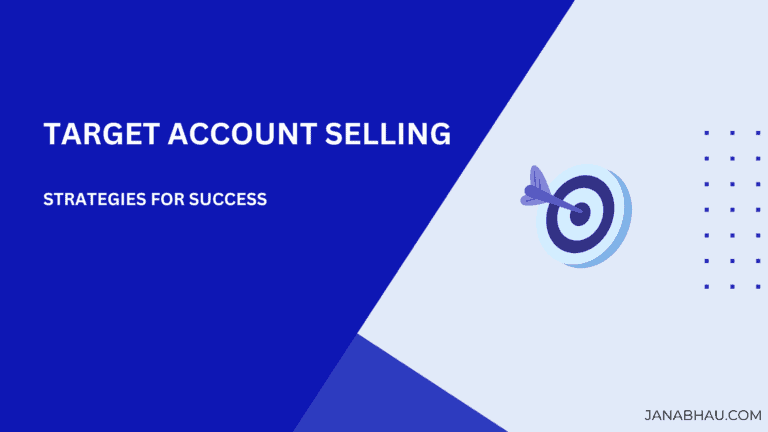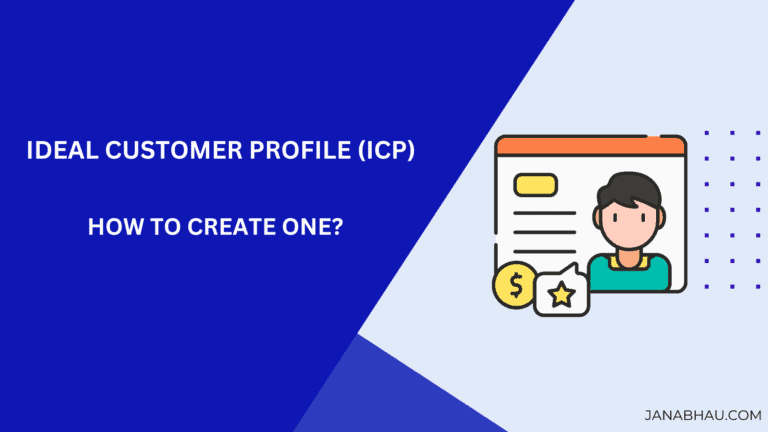How Data Enrichment Transforms Sales & Marketing Activities [+Best Practice]

Are you or your team spending more time wrestling with data than connecting with customers?
If so, this blog post is for you.
As a sales professional, I’ve faced these challenges and found my lifeline – data enrichment. It saved me hours of work, let me focus on revenue-generating activities, and enabled me to craft personalized messages at scale.
In this post, we’ll explore how data enrichment can revolutionize your sales and marketing activities, freeing up your time and enhancing the relevance of your initiatives. Plus, we’ll talk about best practices in its implementation to maximize its benefits.
Key Takeaways
- Data enrichment involves the integration of first-party data with external sources to improve existing information. This enriched data, acquired through internal operations or more efficiently via specialized data enrichment tools, significantly enhances customer insights and optimizes sales and marketing initiatives.
- The key benefits of data enrichment include providing more targeted marketing messages, improving customer experience through personalization, and saving time and costs by automating data collection processes. Ultimately, these advantages contribute to improving both top and bottom lines.
- Different types of data are utilized for enrichment (e.g., socio-demographic, geographic, technographic), and various techniques are applied (e.g., data appending, segmentation) to ensure data quality and relevancy for businesses, necessitating continuous evaluation and adherence to privacy policies.
What is Data Enrichment?

Data enrichment involves the integration of first-party data with external sources to supplement and improve existing information, allowing businesses to enrich data and gain a more comprehensive understanding of prospects or customers. It’s akin to enhancing a black-and-white picture with vibrant colors, providing more depth and context.
The task of data enrichment includes various steps such as data appending, data segmentation, and deriving attributes, which we will examine in greater detail later. These steps are aimed at enhancing collected data with additional context and details from third-party data to improve understanding and personalization, often using data enrichment tools.
Yet, this is not simply a data collection routine. Enriched data is like a treasure chest of insights that can help companies understand their customers better and tailor their offerings accordingly.
For instance, a CRM contact can be enriched with not only email and phone numbers but additional data such as the size and industry of the company the contact is working with. This allows for a better understanding of their prospects or customers, improved customer experience, and personalized sales efforts.
According to SiriusDecisions, businesses actively maintaining their databases can experience a 66% higher conversion to revenue compared to those neglecting such proactive efforts.
Data Cleansing vs. Data Enrichment
Data cleansing is the meticulous process of removing inaccurate or outdated data from your databases. On the other hand, data enrichment enhances existing data with external data, providing additional context and relevance. In essence, data cleansing is like clearing the stage before the performers—enriched data—take their place.
It’s crucial to understand that data cleansing usually happens first to ensure the quality and integrity of the existing data, thereby enabling more effective enrichment. The objective isn’t to amass the most data but to gather sufficient, relevant information for meaningful activities.
The Benefits Of Using Data Enrichment

Data enrichment is not just about enhancing your data; it’s about enhancing your business operations. By providing more targeted messaging, improving customer experience, enhancing personalization, and saving time and costs, data enrichment ensures that your business gets the most out of every piece of data.
More Targeted Messaging
In marketing, one size doesn’t fit all. Each customer is unique, and so should be the messaging. With data enrichment, businesses can segment their audience quickly based on various factors like geography and demographics. This segmentation not only ensures more relevant messaging but also helps in creating a more targeted and successful marketing campaign.
Better Customer Experience
In today’s world, buyers expect you to know them, anticipate their needs, and be relevant. Data enrichment enables businesses to achieve a more comprehensive understanding of customer needs and preferences. With this understanding, sales teams can make more informed decisions and offer more relevant and personalized offerings, thereby enhancing the customer experience.
Enhanced Personalization
Data enrichment helps you understand behavior patterns, preferences, and needs to provide a truly personalized experience. By using enriched data, businesses can approach customers and prospects with more personalized messaging, leading to more closed deals and better retention.
Time and Cost Savings
By automating the data-gathering process, manual tasks are eliminated, freeing up time for teams to focus on revenue-generating activities. This leads to significant time and cost savings, making data enrichment a valuable asset for any business.
Types of Data Enrichment

Just like a painter uses different colors to create a masterpiece, data enrichment employs various data types to create a comprehensive customer profile. These types include:
- Socio-demographic data
- Geographic data
- Technographic data
- Behavioral/purchase intent data
Each type of data, including semi-structured data, brings a unique dimension to the customer profile, enhancing its richness and relevance through the use of a customer data platform.
Socio-demographic Data
Socio-demographic data gives businesses insights into their customers’ social and demographic characteristics, such as gender, age, and occupation. This data is invaluable for businesses to categorize their customers and create more targeted messaging.
Geographic Data
Geographic data adds another layer to the customer profile by providing information on the customer’s location. By enriching their customer data with geographic information, businesses can ensure better targeting of their messaging, leading to more effective sales and marketing campaigns.
Technographic Data
Technographic data provides insights into a customer’s technology usage, such as their preferred technologies and their tech devices or software. This data can be extremely valuable for businesses, especially those in the tech industry, as it allows them to tailor their offerings to match their customers’ tech preferences.
Behavioral/Purchase Intent Data
Behavioral or purchase intent data provides insights into customer behavior patterns, such as their spending habits, feature use, and browsing history. This data can help businesses anticipate their customers’ needs and create more personalized sales activities.
Data Enrichment Techniques

Data enrichment is not a one-size-fits-all process. Different businesses have different needs, and therefore, different techniques are used to enrich the data.
These techniques help businesses enhance their data quality, enabling them to make more informed decisions and drive better outcomes.
Appending Data
Appending data is like adding more colors to your palette. It involves combining data from various sources to get a more holistic overview and understanding of your customer or prospect. This technique is especially beneficial for businesses that have multiple data sources.
Data Segmentation
Segmentation is like organizing your palette by color groups. It involves using enriched data to segment customers into certain segments based on various criteria like geography, company size, and industry. This categorization not only makes it easier to target specific customer groups but also improves the effectiveness of your marketing efforts.
Derived Attributes
Derived attributes are like creating new colors by mixing existing ones. They are data points that can be created by using multiple data you already have. For example, the average deal cycle for customers can be determined by deriving data from when the opportunity was created in the CRM and the date the opportunity was closed.
Data Enrichment Best Practices
Like any other process, data enrichment requires a set of best practices to ensure its effectiveness. These include:
- Setting clear goals
- Establishing consistent processes
- Continuously evaluating your needs to make sure you only extract data that is relevant
- Providing too much data can actually slow down your processes
Next, let’s learn how to implement these best practices.
Align with Strategic Goals
The first step in any process is to set clear goals. Before you start enriching your collected data, define what raw data is needed to meet your business goals and successfully execute your initiatives. This will ensure that you don’t waste time and resources collecting irrelevant data.
Establish Scalable Processes
With your goals defined, the next step is to institute clear processes. These should be consistent and scalable to ensure that they can grow with your needs. If manual components exist within your process, ensure you have enough resources to maintain the process with growing needs.
Continuous Evaluation To Avoid Data Paralysis
Finally, remember that data enrichment is not a one-time process. It requires continuous evaluation to make sure the data remains relevant to your changing goals and priorities, and to address any missing or inconsistent data.
Routinely assessing your requirements and adapting your processes guarantees that data enrichment remains beneficial for your organization.
Wrapping Up and My Experience With Data Enrichment
I embarked on my journey with data enrichment while working in sales at a rapidly expanding startup. At that time, data enrichment was still in its early stages, but its potential was evident.
Through the use of enrichment tools, we were able to execute initiatives like intent-based sales outreach, which were not possible before. Also, the process of extracting important data became less time-intensive, allowing our sales team to dedicate significantly more time to revenue-generating tasks.
This experience showed me that using a data enrichment tool can lead to significant improvements in business operations. However, it’s a powerful tool that must be managed with care. Adjusting processes to new priorities and continuously evaluating your needs are crucial to ensure they continue to benefit your organization.
In conclusion, data enrichment is more than just a selecting a tool; it’s a strategic approach that, when employed correctly, can significantly enhance operational efficiencies, drive revenue, and empower organizations to stay ahead of the curve.
Frequently Asked Questions
What is an example of enriched data?
An example of enriched data could be a customer database for a software business. Originally, the database might contain basic information like customer names, contact numbers, and email addresses.
Through data enrichment, additional details such as the customers’ purchasing history, preferences, demographic information, other software they use, etc., can be added. This not only provides a more comprehensive view of each customer but also aids in personalized marketing and better customer service.
What are the steps in data enrichment?
Data enrichment starts with collecting data from various sources, cleaning it for accuracy, and appending more data for additional context. The data is then segmented based on specific criteria, and new data (derived attributes) are created from the existing data.
Missing data gets filled in through imputation. Specific data is extracted from unstructured sources in the entity extraction step, and finally, the data is categorized for easier analysis and interpretation. This process enhances data quality and aids in better decision-making.
Does Data Appending Affect Privacy Policies?
As with any process that involves data collection and usage, data appending has significant implications for privacy policies. It requires the careful management of new or updated data points to ensure compliance with privacy regulations.
It’s crucial for organizations to ensure that their data appending practices are in compliance with all relevant privacy laws and regulations. This includes obtaining necessary permissions before appending data, ensuring the appended data is handled and stored securely, and being transparent with customers about how their data is being used.
How Does Machine Learning Complete Data Enriching?
Machine learning plays a pivotal role in data enrichment. By automating the process of data collection and analysis, machine learning allows businesses to:
- Extract meaningful insights from their data at a much faster rate than manual methods
- Enhance the quality of the enriched data
- Make more timely and informed decision-making.






